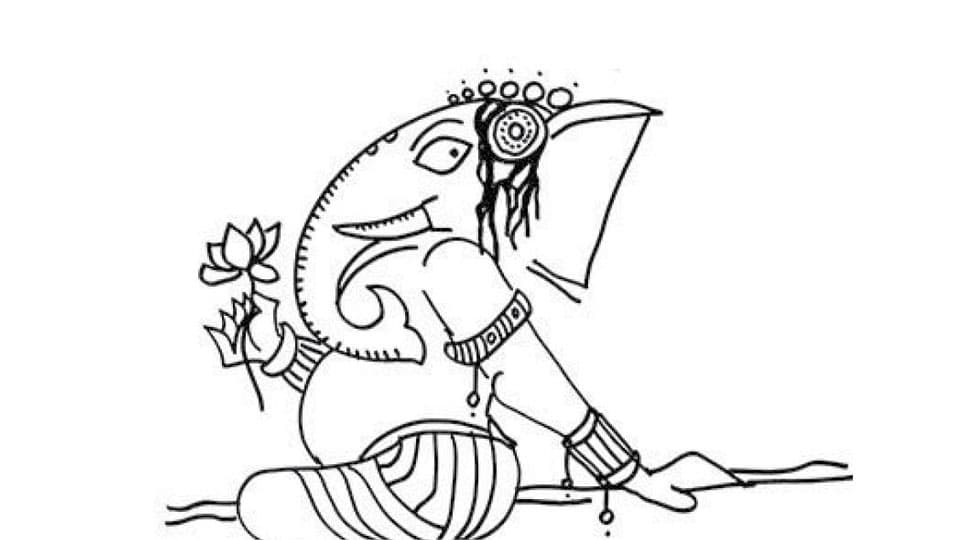By Dr. Devdutt Pattanaik – Author, Speaker, Illustrator, Mythologist
Rats evoke the feeling of disgust. There is something inherently dark, unclean and sinister about them. Think rats and you think garbage, gutter, plague and other diseases. Rats mean destruction of property. Pilferage. Filth. There is nothing adorable or desirable about a rat. So why is Ganesha always associated with a rat, lovingly called Mooshika?
Aha, but it is not a rat; it is a mouse. Rats are nasty. Mice are much gentler. Cute Ganesha rides a cute mouse, my nephew insists. The fact is, nobody is sure what Mooshika is, exactly. Scholars and the general public can argue about it endlessly referring to obscure Sanskrit texts: Rat. Mouse. Maybe even a bandicoot. Whatever! Basically a rodent, pest, the bane of the storehouse, farmer’s enemy, a denizen of the sewer. Rats are inauspicious. You definitely don’t want them in your house.
Ganesha is Mangala-Murti, the embodiment of auspiciousness. Why then does he have as his mount something so inauspicious as a rodent? What is the message there?
Mooshika embodies the pest that plagues our lives, a problem so small that it eludes detection, and exasperates us.
It is that bill that will never be cleared by the boss; that pimple that refuses to go away. It is that neighbour who always parks his garbage right in front of your door. It is that dripping water tap that no plumber can fix. It is that set of keys which you cannot find just when you have to leave the house; that case in court which is not moving for years. These are the rodents in our lives, the insatiable thieves who are gnawing into our sense of well-being.
Imagine someone who gets rid of all those irritating rat-like problems of your life. That someone, for Hindus, is Ganesha. Around Ganesha’s giant belly is a serpent – that friend of the farmer – who eats the rats, controls pilferage and thus protects the harvest. With the grace of Ganesha, problems disappear and prosperity and power appear. You can imagine Ganesha catching hold of a problem (rat/mouse/bandicoot) by its tail, dragging it away, sitting on it, so that it troubles you no more. No wonder Ganesha is such a popular God. Remover of rats that plague our existence. Remover of obstacles, remover of hurdles. Vighna-harta.
Rats are also symbols of fertility as they are fast breeders. Ganesha is always associated with fertility symbols. The Dhurva grass for example, which keeps growing even when uprooted. If Dhurva is the plant-symbol of fertility, rat is the animal-symbol of fertility. In China and Japan, rats are associated with fertility, children, prosperity. Rats are also unstoppable, relentless, breaking through any obstacle to get to the grain. They are also symbols of avarice and greed. They are relentless hoarders. Thus, rats have a positive aspect (fertility/unstoppability) and a negative aspect (pilferage/plague). With Ganesha sitting atop Mooshika, only the positive aspects reach devotees while the negative aspects stay away.
Ganesha’s image may evoke a sense of prosperity and power and auspiciousness for which fertility is important but his Mooshika reminds us not to be complacent: the rat may be fertile and unstoppable – a contributor to our wealth – but it is also capable silently and secretly gnawing into our ethics, our morals, our values, the very foundation of our apparently fulfilled lives.
[e-mail:[email protected]]








Recent Comments